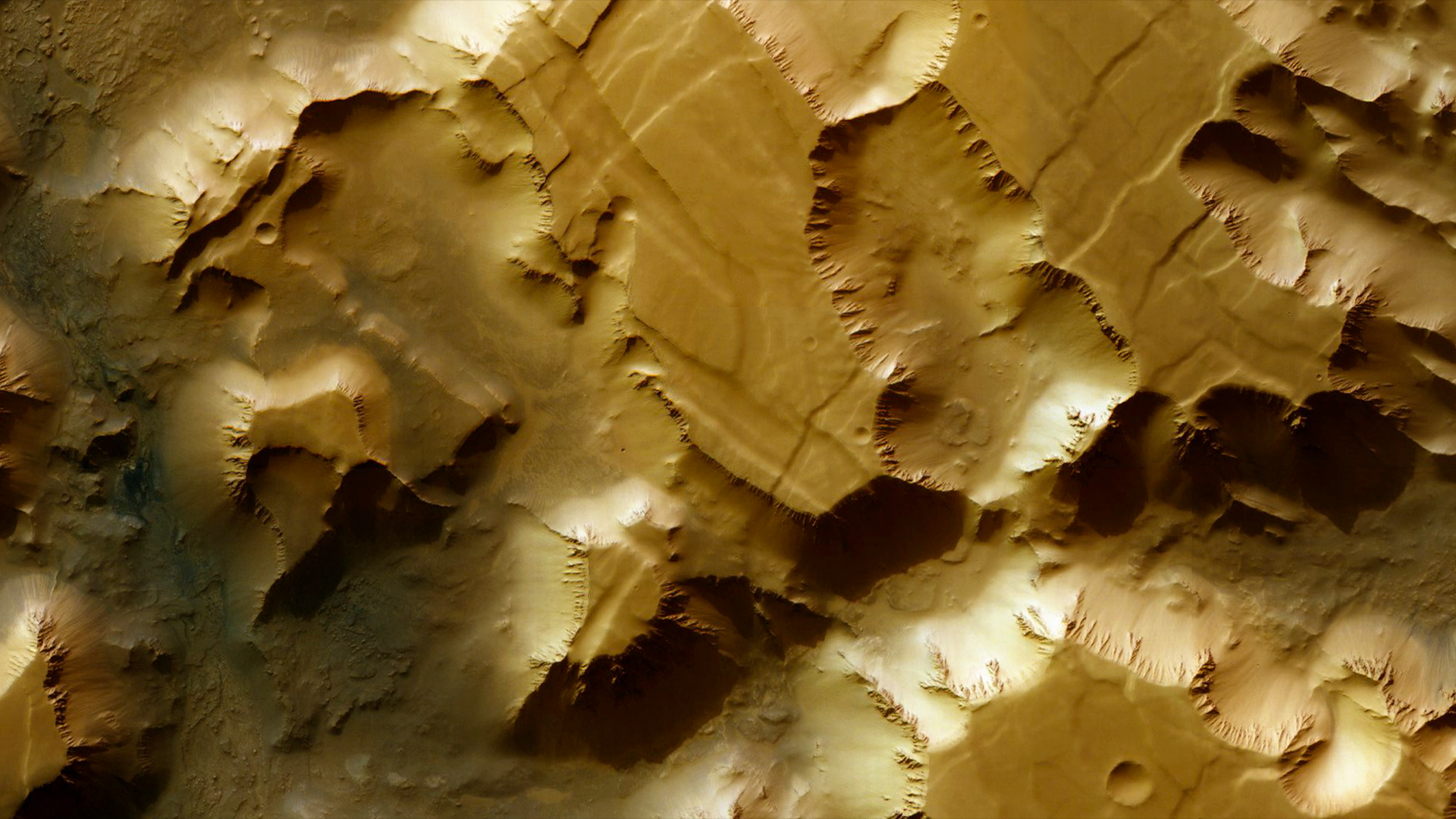Soar through the 'Labyrinth of Night' — a Martian canyon the size of Italy — in thrilling new satellite video
See Mars' geology up close, thanks to decades of stunning images from the Mars Express satellite, in a new visualization of Noctis Labyrinthus, the 'Labyrinth of Night'.

A thrilling new video lets viewers fly through Mars' enormous "Labyrinth of Night," a system of extremely steep valleys about the length of Italy.
The criss-crossing valleys in Noctis Labyrinthus, which is Latin for "Labyrinth of Night," are up to 19 miles (30 kilometers) wide — a bit longer than Manhattan — and 5 miles (6 km) deep. In the video, released by the European Space Agency (ESA), you can also spot craters, the wreckage from huge landslides, and dunes from blowing sand.
The video also shows curious geologic features called grabens, which are a sign of plate tectonics. These "stretch marks" are parts of the Martian crust that have been stressed and cracked due to volcanic activity, ESA officials said in a statement.
Related: Mercury is still shrinking after billions of years, and scientists can see its 'wrinkles'
The simulation was created using data from Europe's Mars Express satellite, which arrived at the Red Planet in December 2003 and has been taking photos ever since. The mission hugely contributed to our knowledge of Mars' geology and atmosphere.
Mars Express also took fantastic photos to inspire space lovers of all ages. Its images can show features as small as 33 feet (10 meters) across on the Martian surface. In fact, the mission team recently put together a new mosaic image covering the whole globe to celebrate the spacecraft's 20th anniversary.
Both the mosaic and the new "Labyrinth of Night" video were created with images from the orbiter's High Resolution Stereo Camera. In addition to taking full color images, it also mapped the surface in 3D, providing the depth of the topography shown in the video.
Get the world’s most fascinating discoveries delivered straight to your inbox.
Earth has plate tectonics, so it has grabens like the ones shown in the video. You can spot them in Canyonlands National Park or explore one in Death Valley, which is itself a massive graben. And now, you can fly over the grabens of Mars, with Mars Express' beautiful view of Noctis Labyrinthus.

Briley Lewis (she/her) is a freelance science writer and Ph.D. Candidate/NSF Fellow at the University of California, Los Angeles studying Astronomy & Astrophysics. Follow her on Twitter @briles_34 or visit her website www.briley-lewis.com.



